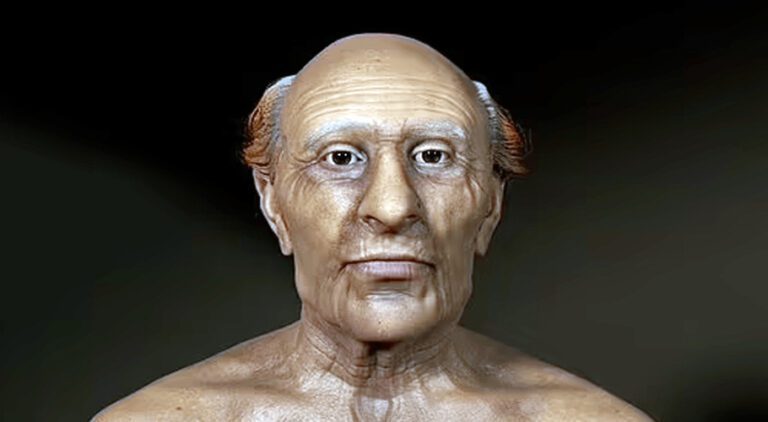The face of ancient Egypt’s most powerful pharaoh, Ramesses II, can be seen for the first time in 3,200 years thanks to a new scientific reconstruction.
Scientists from Egypt and England collaborated to capture the king’s likeness at his time of death, using a 3D model of his skull to rebuild his features.
They then reversed the ageing process, turning back the clock almost half a century to reveal his face at the height of his powers.
Sahar Saleem of Cairo University, who created the 3D model of the skull, said the outcome had revealed a ‘very handsome’ ruler.

She said: ‘My imagination of the face of Ramesses II was influenced by his mummy’s face.
‘However, the facial reconstruction helped to put a living face on the mummy.
‘I find the reconstructed face is a very handsome Egyptian person with facial features characteristic of Ramesses II – the pronounced nose, and strong jaw.’
Caroline Wilkinson, director of the Face Lab at Liverpool John Moores University, which rebuilt the pharaoh’s visage, described the scientific process.

She said: ‘We take the computer tomography (CT) model of the skull, which gives us the 3D shape of the skull that we can take into our computer system.
‘Then we have a database of pre-modelled facial anatomy that we import and then alter to fit the skull.
‘So we’re basically building the face, from the surface of the skull to the surface of the face, through the muscle structure, and the fat layers, and then finally the skin layer.’
She continued: ‘We all have more or less the same muscles from the same origins with the same attachments.


































